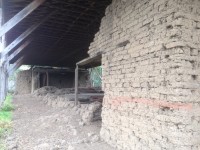As summer closes, the family took a little excursion to the northern frontier, winding our way out of Seattle to the little town of Monroe, Washington. A McKale family reunion brought first, second and third cousins together from all over the U.S. Washington has unique natural feel and some interesting history as well.
Monroe finds it roots intertwined with the Great Northern Railway. The railway ran from Saint Paul, Minnesota to Seattle, Washington, covering about 1,700 miles. Railroad tycoon James J. Hill, developed the line, which was the northernmost route of all transcontinental railroads in the US. The line was completed in 1893, ending at Scenic, Washington.
Monroe was known for its Great Northern Greenhouses, which grew flowers for the passengers to purchase. The mighty Skykomish River, which flows through town, saw its first bridge in 1894 and its first church in 1896.
Lumber became Monroe’s primary economic industry and dozens of sawmills were developed taking advantage of the areas old growth cedar. It didn’t take long to wipe out the cedars and agriculture became the county’s number one economic endeavor.
In the early 20th century, berry farms, dairies and creameries began to crop up throughout the area and are still evident throughout the Monroe area. The old Carnation Condensery was destroyed by fire in the 1940’s, though it’s giant smokestack still can be seen off in the horizon.
Monroe officially incorporated in 1902 and within a few short years constructed its city Hall. In fact, one similarity between Monroe and Sonoma, is that both our City Halls were completed in 1908.
On a previous trip to Washington I was asked if I knew anything about the gold rush. With great pride, I began to address a large crowd, discussing the 1849 rush that changed California forever. Of course, they were not interested in the California Gold Rush, but the Klondike up in Alaska. Seattle was a major departure point for those seeking their fortunes in the real northern frontier.
Yet another connection between Sonoma and the Seattle/Monroe area was Mr. Jack London and his adventures to the Yukon. London’s sister and brother-in-law loaned him money, and he boarded a steamer for Seattle, bought provisions and continued north to Alaska. London arrived in the fall of 1897.
Reportedly, 100,000 men tried to make it to the remote areas of the Yukon. Of these, only 30,000 were successful, most exhausted and overwhelmed by the daunting journey. London made it all the way, and while he did not strike it rich or find the mother lode, he honed his skills as a writer, detailing the day-to-day hardships of those seeking fortune in the Alaskan wilderness. From his experiences in Alaska, “Call of the Wild” was born.
What else did I do on my summer vacation to Monroe? Well, I hiked to Serene Lake, a beautiful glacier-fed lake that those under the age of 20 swam in. That Turning Stone’s adventure was painful and I found out rather quickly that the muscles in my legs aren’t what they used to be. We went crabbing and tubing in Puget Sound, and just like the youngsters, I swung from a makeshift rope into the frigid waters of the sound. My heart, evidently, was strong enough to withstand the quick change in temperature, as I swam to the shore to live another day.
I like summer vacation. I like family. I like visiting new towns and meeting new people. One of my favorite memories will be sitting at the old wooden table on the shores of the sound, cracking fresh caught crab, and talking with my 96-year-old Uncle Tom. There’s nothing better than talking history with someone who’s lived it. I will miss the summer of 2013.

